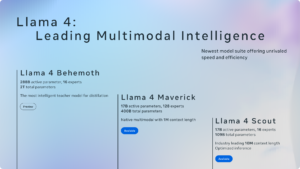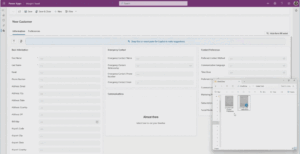Meta AI Unveils MILS: A Training-Free Multimodal AI Framework for Zero-Shot Understanding of Images, Videos, and Audio

Meta AI Unveils MILS: A Game-Changer in Multimodal AI
In the evolving landscape of artificial intelligence, Meta AI has recently introduced an innovative framework known as MILS, which stands for Multimodal Image, Language, and Speech. This groundbreaking framework emphasizes a training-free approach to comprehend images, videos, and audio, aiming to improve the way machines understand and process various types of media.
Understanding MILS: The Basics
MILS represents a significant advancement in multimodal AI, enabling seamless interaction between different media types without the extensive training typically required by existing models. Here are some essential features and goals of the MILS framework:
Zero-Shot Understanding: MILS is designed to interpret data from multiple sources simultaneously. This means that the system can analyze and understand content without needing prior training specifically tailored to that content type.
Integrated Analysis: Instead of handling images, audio, and text separately, MILS leverages connections between these modalities, allowing for a more coherent understanding of the information presented.
- Real-Time Processing: The framework aims to provide real-time data processing capabilities, making it suitable for applications in social media, virtual reality, and other interactive platforms.
Features of MILS
The MILS framework boasts multiple features that set it apart from traditional approaches to AI. Here are some of its notable aspects:
Training-Free Mechanism: One of the standout elements of MILS is its ability to function without extensive datasets or tailored training protocols. This significantly reduces the time and resources required for implementation.
Multimodal Capability: MILS can handle various types of data, including:
- Images: Recognizing objects, scenes, and more.
- Videos: Interpreting movements and actions within a sequence.
- Audio: Understanding speech patterns and sounds.
- Comprehensive Performance: This framework is engineered to deliver cohesive insights across different types of media, allowing for more comprehensive applications in areas like content creation and digital marketing.
Applications of MILS
The capabilities of MILS open up numerous potential applications across various fields:
Content Creation: Creators can use MILS to generate richer, more engaging multimedia content by understanding how different types of media interact.
Customer Service: Businesses may employ MILS to enhance customer interaction by analyzing voice and text inputs simultaneously, leading to more intuitive and responsive chatbots.
- Education: In educational technology, MILS could facilitate enhanced learning environments by combining video, audio, and text resources for a more enriching student experience.
Future Prospects
Looking ahead, MILS sets the stage for exciting developments in AI technology. Its ability to understand and process information across different modalities could lead to significant improvements in various sectors, including entertainment, education, and customer engagement. Given the rapid advancements in AI, the introduction of MILS might inspire further innovations and enhancements in multimodal frameworks.
By eliminating the need for extensive training, MILS not only streamlines the deployment of AI systems but also enhances functionality, urging businesses and developers to rethink how they approach machine learning and media processing. As the AI field continues to evolve, frameworks like MILS will likely be at the forefront of this transformation, encouraging broader applications and improved user experiences.





